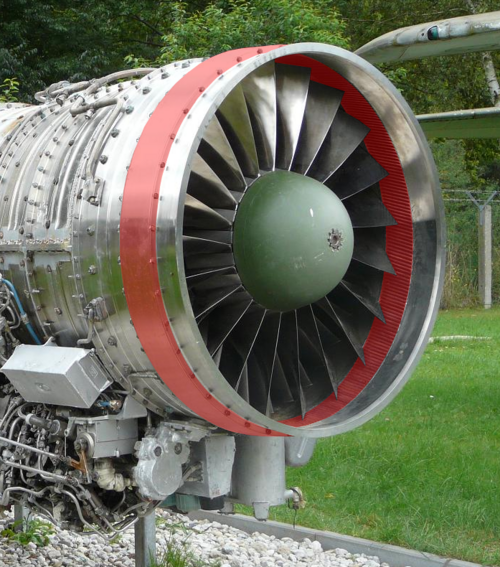No matter which engine it is, what got my attention was the raised land on the fan case aft of the inlet variable vane synchronizing ring. That looks just like the TF30-P-414 first blade containment ring:
1. Does this fan have a 1st stage blade liberation problem that requires containment?
2. The containment is likely to be made of steel to prevent any Ti blade to Ti case rub induced rapid oxidation events (i.e. Fire !!). There goes part of your 10:1+ thrust to weight ratio.
Annular volume for fan rotor casing treatment? This is a *very* popular feature in Russian engines, after all (IIRC it's actually a Russian invention) - to the extent that I'd be surprised if this engine did NOT have it.
EDIT: As far as blade liberation risk, if (as claimed) this engine draws heavily on the Izd.30, the new fan would be a wide chord blisk (the wide chord blades are actually mentioned explicitly on the slide posted earlier). You'd have to seriously mess up to get a design especially prone to throwing blades out of that, certainly the slide also touts improved FOD resistance.
Last edited:




